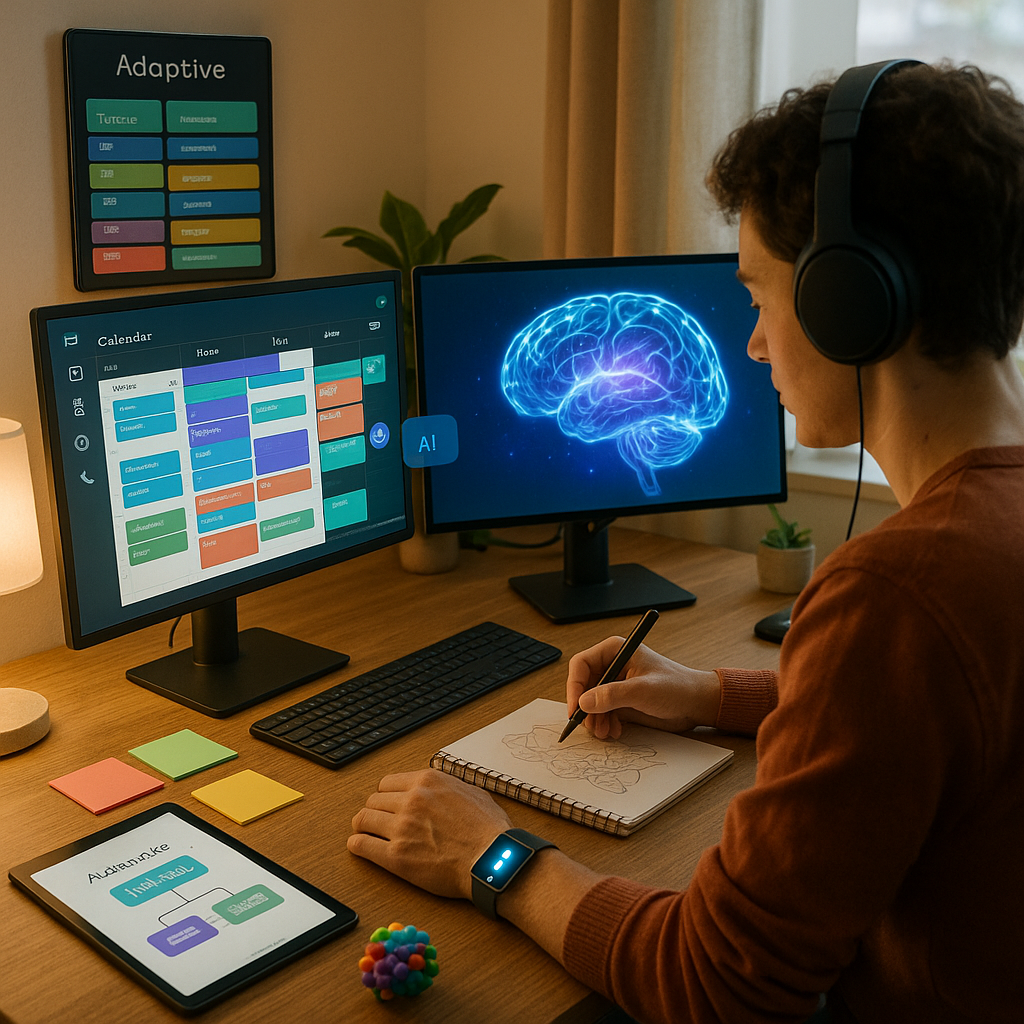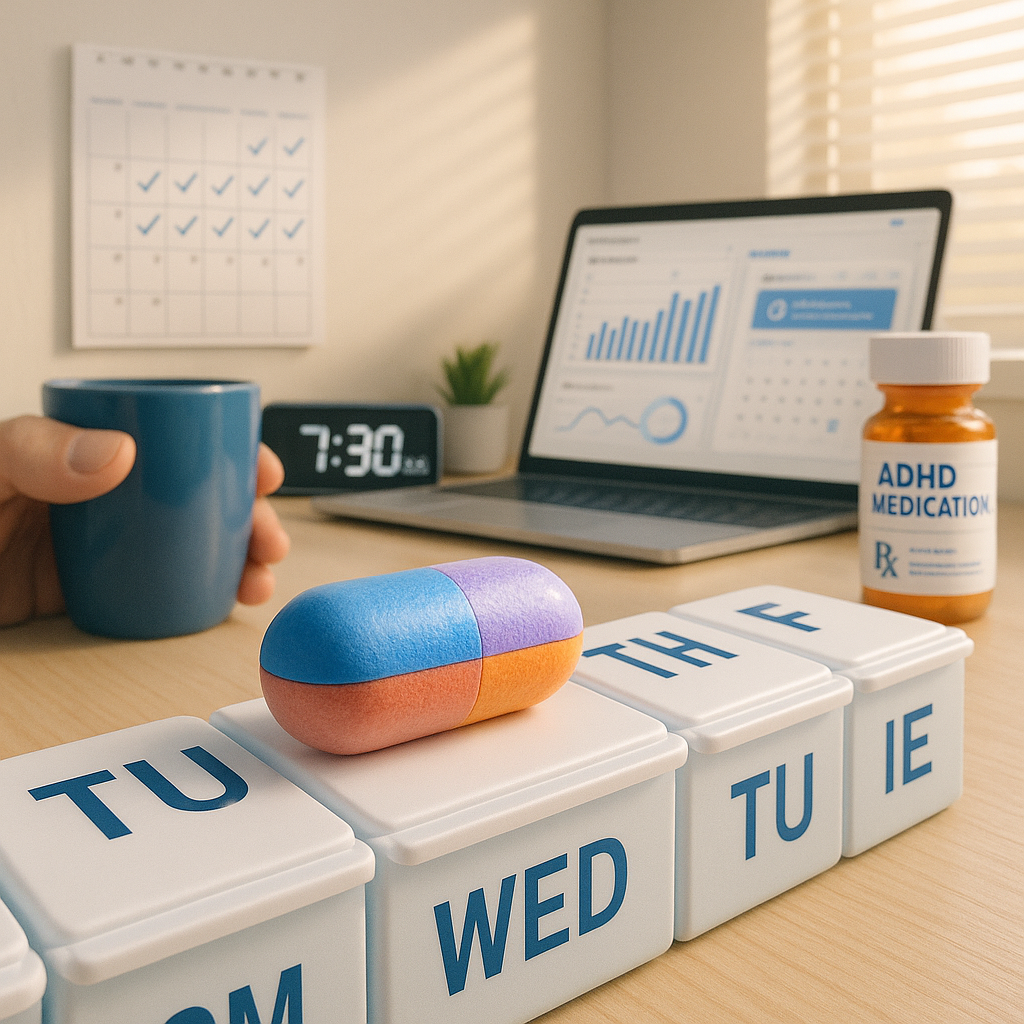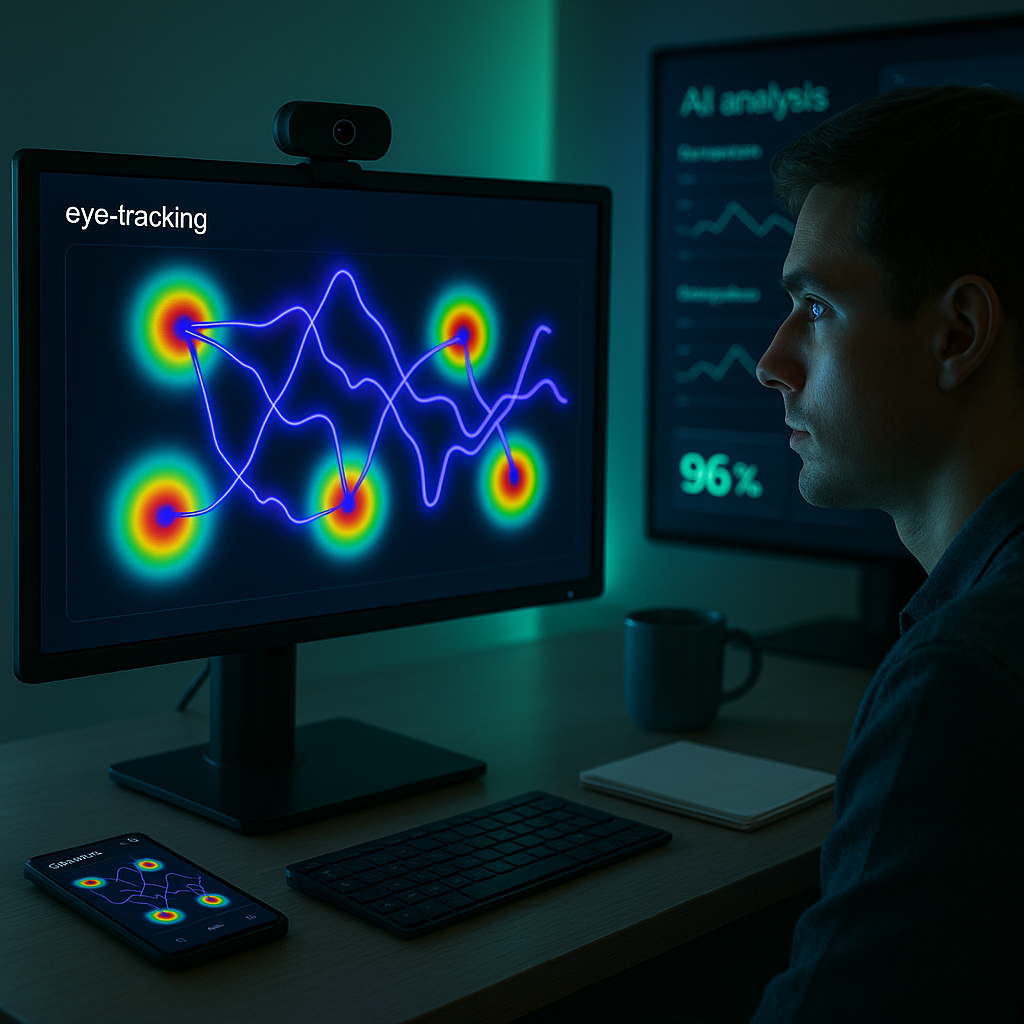Key Takeaways
- AI routines boost sustainability: Personalized AI tools help adults with ADHD turn fleeting routines into lasting habits by adapting in real time to shifting energy and focus.
- Automation reduces overwhelm: Automated reminders and workflows offload mental clutter, allowing neurodivergent professionals to focus on high-impact and creative work.
- Lived experience drives innovation: Solutions designed by people with ADHD, such as ADHDink’s founder, are shaping a new generation of authentic, user-centered productivity tools.
- Creativity becomes a strength: AI helps capture hyperfocus and channel it productively, transforming perceived chaos into powerful bursts of progress for solopreneurs and creatives.
- Scalable systems support growth: AI solutions are being adopted by individuals, teams, and businesses for ADHD-friendly, AI-driven workflows that promote sustainable expansion.
- New tools coming soon: Advances in AI-driven productivity are expected to deliver even more adaptive, neurodivergent-friendly options for building routines in 2024 and beyond.
Introduction
AI-powered tools are changing how adults with ADHD build sustainable routines. Through smart automation and personalized assistants, unpredictable days become more manageable. These technologies help users manage overwhelm, focus energy on priorities, and discover new possibilities for growth without burnout.
How AI Is Transforming ADHD Routines
AI tools are redefining how adults with ADHD approach routine-building by adapting to natural work patterns rather than imposing rigid systems. These technologies provide personalized support that adjusts to fluctuating energy, variable focus, and executive function challenges throughout the day.
Many neurodivergent professionals find that AI assistants act as external executive function systems, delivering essential structure without rigidity. Maya Chen, a graphic designer with ADHD, noted that her AI morning routine assistant does not judge when she needs to restart her day late, using OpenAI’s ChatGPT to generate adaptive daily schedules.
The most effective AI tools reduce decision fatigue and create “points of performance” (environmental cues that prompt action at just the right time). When calendar reminders fall flat, AI systems can adapt their approach and persistence based on user response patterns.
As AI becomes more skilled at recognizing individual ADHD profiles, many users describe a “second brain” effect that bridges intention and action. This represents a shift from simple reminders to comprehensive support tailored to the unique needs of neurodivergent minds.
Automation: Offloading Overwhelm and Mental Clutter
Automated workflows are easing the cognitive load of routine tasks, freeing up neurodivergent professionals for more creative and strategic work. For individuals whose working memory struggles with sequential steps, these tools consolidate multi-step processes into single commands that require less executive function.
Platforms like Zapier and IFTTT enable users to establish “set and forget” systems for tasks such as email sorting or project management transitions. Jamie Rivera, a software engineer, created a custom automation that monitors work patterns and adjusts Slack notifications based on his focus, reducing context-switching by 40%.
A key benefit is the reduction of “activation energy” required to start tasks. Motion CEO Harry Qi explained that, for ADHD brains, initiating action is typically harder than sustaining it. Motion’s AI analyzes behavior to prepare workspaces automatically from calendar events, removing friction that often blocks productivity.
These systems act as prosthetic executive function, letting users offload details that might otherwise sap their cognitive bandwidth. This relief creates more room for the innovative thinking where neurodivergent individuals excel.
Personalized Accountability and Adaptive Assistance
AI accountability partners offer the external structure that many with ADHD rely on, adapting to individual motivation patterns and communication preferences. Unlike human partners who may tire of inconsistency, AI systems deliver constant support while learning which techniques lead to success for each individual.
Tools such as Focus Mate and Motion combine AI with human elements to create systems tuned to ADHD-specific challenges like time blindness and task initiation. Content strategist Devon Williams reported that AI tracks when tasks are actually completed versus planned, adjusting future schedules to improve deadline consistency.
These systems excel at detecting early signs of overwhelm or avoidance. For example, Todoist’s AI can spot tasks that are repeatedly postponed, suggesting smaller steps or better timing based on user data.
The best accountability systems go beyond tracking completion; they celebrate progress in ways tailored to how each person processes rewards. This supportive and personalized approach replaces shame with encouragement, aligning with neurodivergent wiring.
Time Management That Works With ADHD Brains
AI-powered time management tools are transforming productivity for people with ADHD by aligning with natural attention cycles instead of rigid schedules. These systems assess productivity patterns to schedule high-value tasks during optimal periods.
Apps like Focus App and Timely use machine learning to detect individual flow states, protecting those times from interruption and scheduling administrative work when focus is low. Entrepreneur Alex Torres found that traditional time blocking failed him, but switching to AI-based flexible scheduling improved his project completion rates by 65%.
For those with time-blindness, AI-enhanced tools such as Clockify provide adaptive cues that adjust based on user engagement. Rather than disruptive alarms, notifications scale from gentle nudges to more assertive alerts as deadlines approach.
These adaptive tools address what ADHD coach Terry Matlen describes as the “square-peg-round-hole problem” of traditional scheduling. AI-driven solutions respect cognitive rhythms, supporting sustainable routines for neurodivergent users.
Communication Aids and Social Learning
AI communication assistants are streamlining interactions for ADHD professionals facing executive function demands in meetings, presentations, and written exchanges. These tools reduce cognitive load, ensuring important details are not lost to inattention.
Transcription tools like Otter.ai capture conversations in full, while AI email assistants such as Compose AI help structure communications for clarity and brevity. Marketing director Sam Chen stated that he no longer leaves meetings uncertain about his next steps, as AI meeting summaries now generate action items automatically.
For written communications, AI features in tools like Grammarly assist with tone, length, and clarity (supporting users who may struggle with perfectionism or impulsive sending). These virtual aides help neurodivergent professionals navigate professional communication without masking their authentic voice.
As these tools advance, they increasingly identify recurring communication challenges and offer proactive adjustments. This support turns complex social navigation into streamlined processes, preserving cognitive energy for creative contributions.
Scaling Systems: From Personal Use to Teams
AI solutions designed for individual ADHD needs are now scaling to support entire teams, fostering more neurodivergent-friendly workplaces. These systems transfer personal strategies to organizational processes, benefitting all team members while normalizing diverse needs.
Platforms like Asana and Monday.com offer AI features that allow team members to visualize work in alignment with their cognitive preferences. Alicia Jones, an operations director, reported a 28% productivity boost when her team adopted adaptive AI interfaces that accommodate multiple project views.
A primary advantage is AI’s capacity to create consistency while supporting individual interaction styles. For example, AI meeting assistants can generate both detailed notes and visual summaries, catering to diverse information processing preferences.
These adaptations illustrate that accommodations for neurodivergent needs can improve outcomes for everyone. As organizations embrace flexible AI solutions, they are building more resilient teams that benefit from diverse thinking.
What Happens Next: Emerging AI Tools and Approaches
The next generation of AI tools for ADHD management is focusing on emotional regulation and contextual adaptation that responds to fluctuations in executive function. Startups are developing systems that detect emotional states through voice, typing patterns, and behavioral cues, providing interventions before overwhelm impacts productivity.
Wearable technology integrated with AI is delivering “just-in-time” interventions when executive function begins to falter. Features on devices like the Apple Watch offer basic support, while specialized systems such as Mightier are advancing more sophisticated emotion regulation solutions for ADHD.
Voice assistants are evolving into continuous supports. Google Assistant and Amazon Alexa are both developing features to guide neurodivergent users through complex tasks, breaking them into manageable steps based on ongoing feedback.
A promising trend is the growing influence of neurodivergent developers who bring firsthand ADHD experience to the design process. As AI becomes more accessible to a wider pool of creators, new tools are emerging that align with diverse neural wiring and reject one-size-fits-all productivity standards.
Conclusion
AI tools are quietly transforming how adults with ADHD convert ideas into routines, providing adaptive support that matches unique energy patterns and work styles. This shift is helping more professionals replace burnout with sustainable workflows that endure. What to watch: several startups and major technology firms plan to launch emotion-aware, neurodivergent-led AI features in product updates later this year.





Leave a Reply